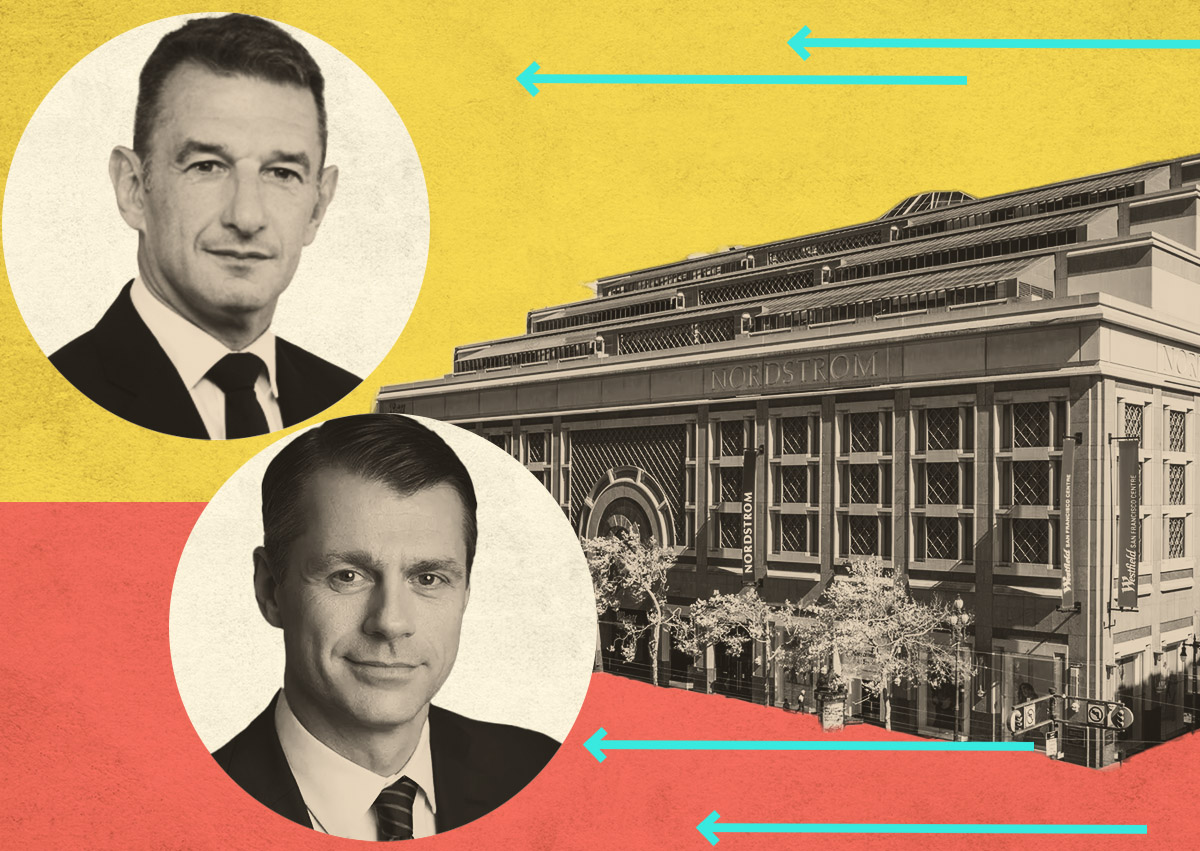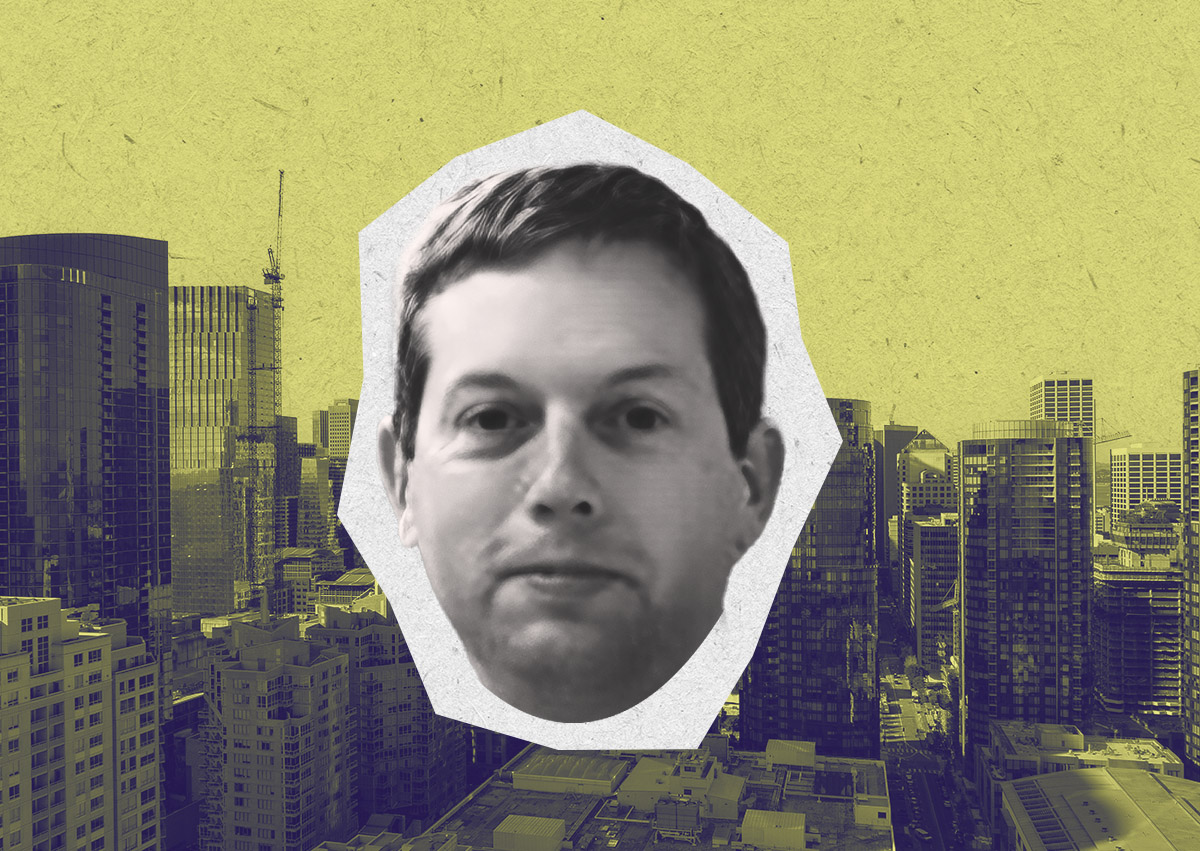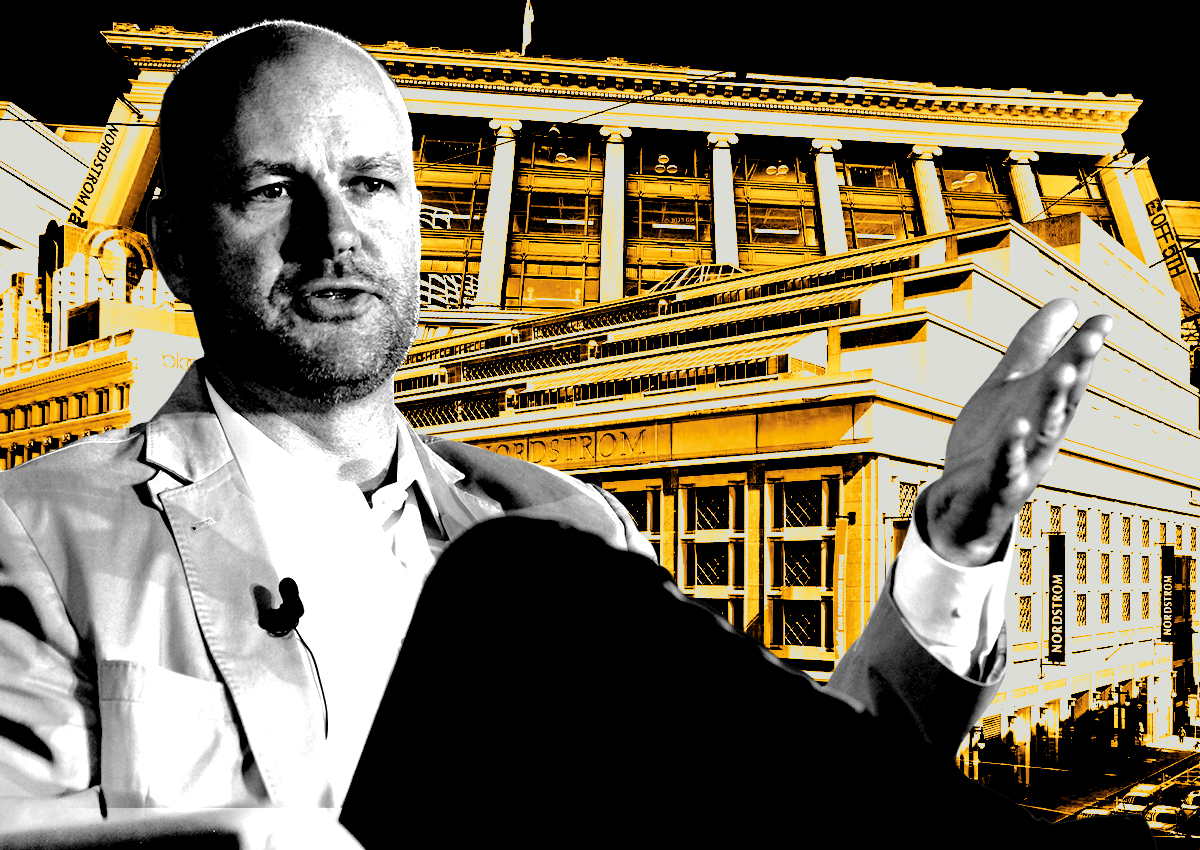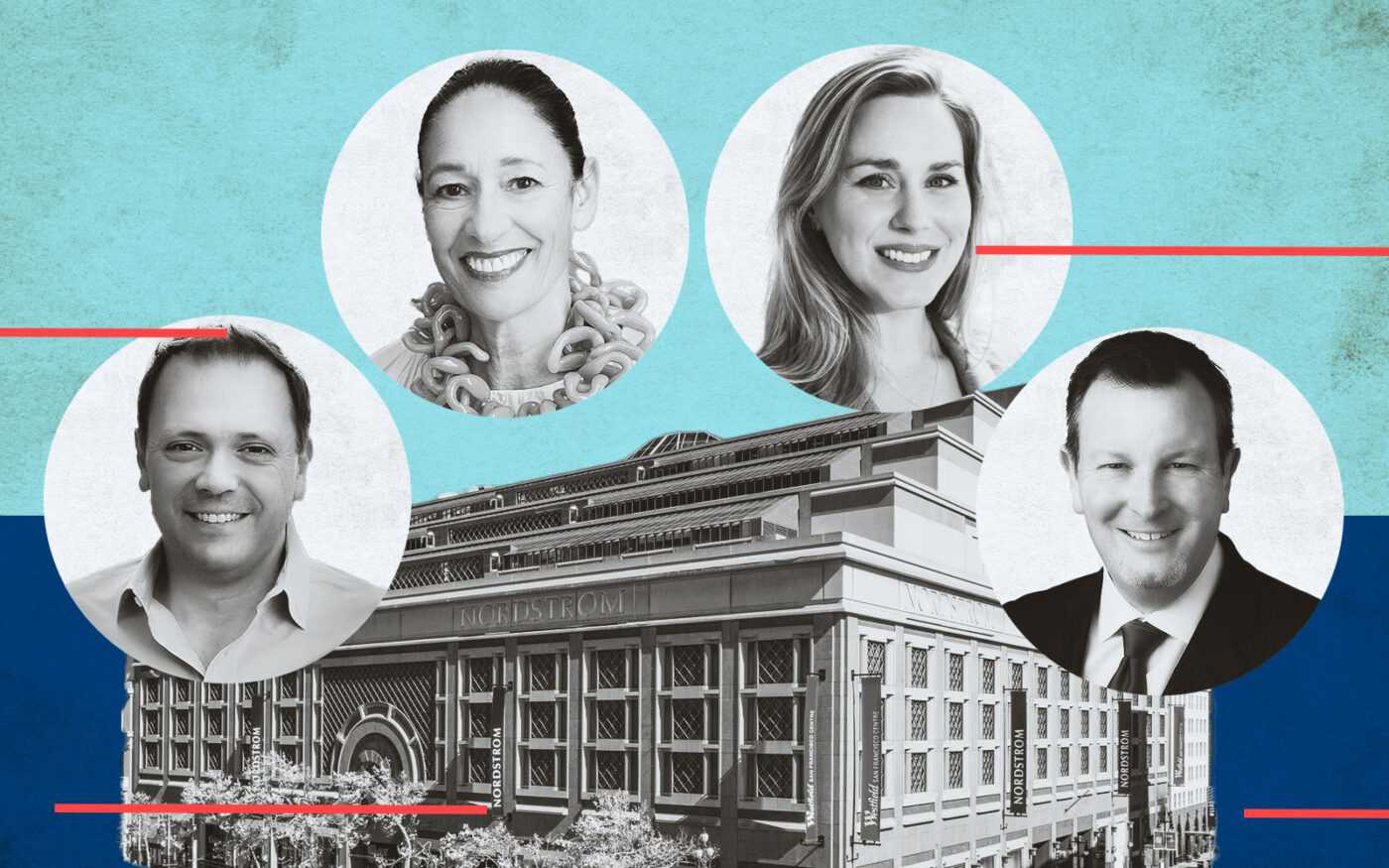The decision by Westfield and Brookfield to hand over the keys to the San Francisco mall they have run downtown for decades didn’t raise many eyebrows among retail agents in the city, who say since the pandemic the retail action has moved to neighborhood streets even as downtown emptied out.
“I saw this coming,” Avison Young agent Cameron Baird said of the news about Westfield San Francisco Centre mall. “I think they were trying to sell and threw in the towel.”
Nordstrom’s recent announcement that it will leave the property means that co-tenancy clauses based on the anchor stores were broken and “shop space users have been moving to exit the mall,” he said, adding that the block-long mid-rise with the distinctive dome roof will likely to go to a buyer who will get it “at a huge discount and land bank it until SF recovers.”
Just what will happen to the 1.8-million-square-foot retail and office space across the street from the Powell Street cable car turnaround is unknown. In the meantime, regular shoppers won’t notice a difference as the mall will “likely stay open through the transfer of control,” according to its former leasing manager Ali McEvoy, now at Maven Commercial, who expects “positive outcomes” from the sale.
“A vertical format of a traditional mall doesn’t tend to suit our local shopper and the center needs to be reimagined with mixed-use in mind,” she said via email, adding that the mall’s ground-floor tenants pay the highest rents and don’t appear to be going anywhere.
The Nordstrom pullout “only increases the likelihood that single-brand retailers will maintain a presence” in San Francisco and will likely look to stay nearby if they are displaced by whatever the Westfield turns into next. She sees a food and entertainment hub as a good fit for the layout and location near public transit and said the city could help make shopping downtown more attractive by reopening that section of Market Street to car traffic.
“Not everyone has access to BART and we are discouraging a significant number of people from driving to San Francisco when we put a mile-long road block in the middle of the city,” she said.
Between the lack of drivers and the lack of office workers, “there are not enough bodies in the Financial District and the surrounding [central business district] and Union Square is still suffering a little bit,” Baird said.
Add to that the city’s current image problem, which both Baird and McEvoy noted are based more on perceptions than reality, and the kinds of national chains needed to fill the huge retail spaces in Union Square are harder and harder to come by. But that doesn’t mean they’re gone forever, Baird said.
“We’ve talked to a few national retailers that have exited recently and they said, ‘We’re taking a break from San Francisco,’ which I think means once we fix our problems maybe they’ll come back,” he explained. “But until we do, they are not pursuing sites in the city.”
Shift to neighborhoods
The neighborhood shopping strips are a different story, agents say.
They are attractive to everyone from local business owners taking advantage of lower rents to online vendors looking for a brick-and-mortar presence.
“These are totally different ecosystems,” said Pamela Mendelsohn of Maven, citing different storefront sizes, audiences and rents downtown compared to neighborhood strips. Many neighborhoods also have bans on formula retail — those with 11 or more locations worldwide — so national brands can’t move in without the additional hassle, time and expense of getting a conditional use permit.
The bifurcation between the types of tenants looking downtown and in the neighborhoods has been going on since the early 2000s, Mendelsohn added. The smaller multi-brand stores and lesser-known brands that couldn’t keep up with rising rents in Union Square began moving to the neighborhood strips, where “people maybe had more leisure time to shop and weren’t dividing their clock between a lot of different entertainment venues in San Francisco.”
Nearly a quarter of Union Square’s 3.2 million square feet of retail space was vacant in the first quarter of this year, compared to about 15 percent for retail properties in neighborhood centers, according to Avison Young data.
Looked at another way, for retail properties in a shopping center, the vacancy rate was 12.5 percent. For retail properties not in a shopping center, the vacancy rate was 4.8 percent, the data show.
Some of the city’s more active shopping streets are in its northern neighborhoods, which have also been most successful with residential renters, some of whom are now paying higher than pre-pandemic prices even as other areas of the city are still well off those peaks.
Chestnut Street has been the “strongest neighborhood” over the last three years, with retail asking rents from $60 to $100 per square foot, according to Santino DeRose at Maven. That beats the $35 to $60 in North Beach, which has also been “incredibly active” and has very little vacancy.
Vans, Herman Miller and Faherty were all recent Maven transactions on Chestnut, he said, while North Beach has been attractive to bars and restaurants such as Convivium wine bar and Sai’s, a longtime Vietnamese favorite that recently announced it will move to North Beach after being relocated from its decades-long home by the SHVO redevelopment of the buildings around Transamerica.
After losing about 20 businesses during the pandemic, DeRose said Fillmore Street is “again thriving” with recent newcomers including Lululemon, jeweler Alexis Bittar and Sezane, a Parisian-inspired pop-up that became permanent. Hayes Valley also saw a lot of turnover as “what was once the hottest neighborhood in the city cooled off a bit during the pandemic,” but the empty spaces were gobbled up quickly, he said.
“Hayes Valley was one of the neighborhoods that we thought would be slow turning around,” said Mendelsohn. “But they closed the streets, they went out and marketed, they got all their restaurants open. The merchants’ association really worked hard to bounce back.”
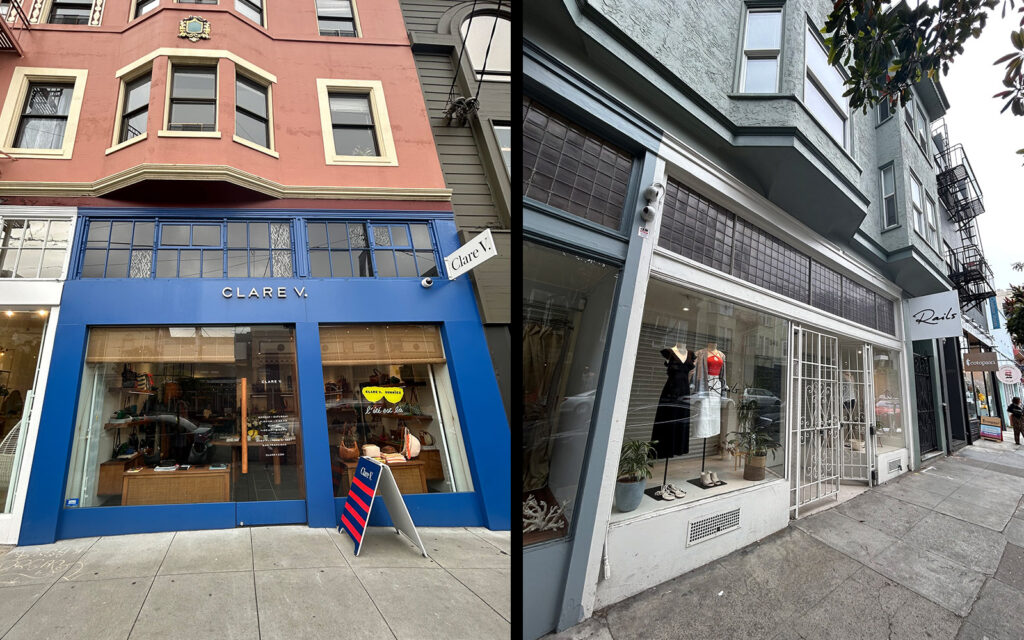
Other neighborhoods have not recovered as quickly. Valencia Street still sees “significant interest” from retailers but has also seen a “significant correction over the last three years,” according to DeRose. Retail rents have dropped from $48 to $72 per square foot in 2019 to $36 to $60 per square foot today, he said, depending on location, size and condition of the space.
As an additional draw to retail tenants, local landlords who have long-term holds on their buildings and deep ties to the community are more flexible with their rents, and there tend to be more of these in the neighborhoods than downtown, Mendelsohn said.
Downtown recovery?
Baird said he wouldn’t count out the flexibility of owners downtown to help bring retailers there, in part because they need amenities in their buildings to attract office tenants, which is “where the revenue really is.”
“These landlords right now downtown are willing to give extremely cheap deals and spend money and spend TI to bring tenants downtown,” he said. “I think a lot of them are viewing ground floor spaces as true amenities, whereas they used to be profit centers.”
In Union Square, the Maven agents said that despite the headlines, big luxury brands are still eager to get into the city and don’t need as many sales as Gap or H&M to hit their revenue targets. Others that are already on the square have expanded their footprints, they said, including YSL, Bottega Venetta and Bruno Cucinelli.
“I think the statement is, ‘We’re happy with our numbers and we’re so happy we’re going to invest in making our space bigger and sell more,’” Mendelsohn said.
Other luxury retailers may come to Union Square soon, she hinted, but high fashion retailers don’t like news of their deals leaking before they are ready, which puts some lag time on how vacant the area appears versus what has actually leased out.
“I think as brokers we see the trends long before anybody else does,” she said.
Read more
